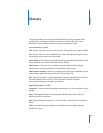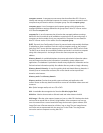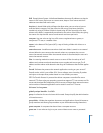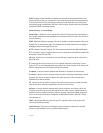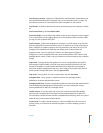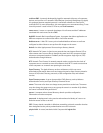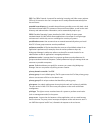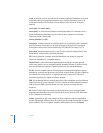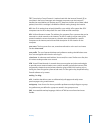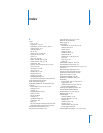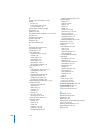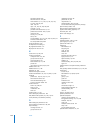
Glossary 265
TCP Transmission Control Protocol. A method used with the Internet Protocol (IP) to
send data in the form of message units between computers over the Internet. IP
handles the actual delivery of the data, and TCP keeps track of the units of data (called
packets) into which a message is divided for efficient routing through the Internet.
UID User ID. A number that uniquely identifies a user within a file system. Mac OS X
computers use the UID to keep track of a user’s folder and file ownership.
URL Uniform Resource Locator. The address of a computer, file, or resource that can be
accessed on a local network or the Internet. The URL is made up of the name of the
protocol needed to access the resource, a domain name that identifies a specific
computer on the Internet, and a hierarchical description of a file location on the
computer.
user name The long name for a user, sometimes referred to as the user’s real name.
See also short name.
user profile The set of personal desktop and preference settings that Windows saves
for a user and applies each time the user logs in.
virtual user An alternate email address (short name) for a user. Similar to an alias, but
it involves creating another user account.
VPN Virtual Private Network. A network that uses encryption and other technologies
to provide secure communications over a public network, typically the Internet. VPNs
are generally cheaper than real private networks using private lines, but they rely on
having the same encryption system at both ends. The encryption may be performed by
firewall software or by routers.
weblog See blog.
wiki A website that allows users to collaboratively edit pages and easily access
previous pages using a web browser.
workgroup A set of users for whom you define preferences and privileges as a group.
Any preferences you define for a group are stored in the group account.
XML An extensible markup language, similar to HTML but more formal and more
flexible.



